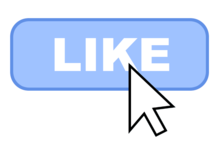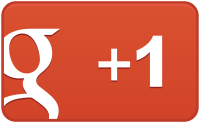
StumbleUpon was a browser extension, toolbar, and mobile app with a "Stumble!" button that, when pushed, opened a semi-random website or video that matched the user's interests, similar to a random web search engine. Users were able to filter results by type of content and were able to discuss such webpages via virtual communities and to rate such webpages via like buttons. StumbleUpon was shut down in June 2018.

Google Reader is a discontinued RSS/Atom feed aggregator operated by Google. It was created in early 2005 by Google engineer Chris Wetherell and launched on October 7, 2005, through Google Labs. Google Reader grew in popularity to support a number of programs which used it as a platform for serving news and information to users. Google shut down Google Reader on July 1, 2013, citing declining use.

YouTube is an American online video sharing platform owned by Google. Accessible worldwide, YouTube launched on February 14, 2005, by Steve Chen, Chad Hurley, and Jawed Karim, three former employees of PayPal. Headquartered in San Bruno, California, United States, it is the second most visited website in the world, after Google Search. YouTube has more than 2.5 billion monthly users, who collectively watch more than one billion hours of videos every day. As of May 2019, videos were being uploaded to the platform at a rate of more than 500 hours of content per minute, and as of 2021, there were approximately 14 billion videos in total.

Facebook is a social media and social networking service owned by the American technology conglomerate Meta. Created in 2004 by Mark Zuckerberg with four other Harvard College students and roommates Eduardo Saverin, Andrew McCollum, Dustin Moskovitz, and Chris Hughes, its name derives from the face book directories often given to American university students. Membership was initially limited to Harvard students, gradually expanding to other North American universities. Since 2006, Facebook allows everyone to register from 13 years old, except in the case of a handful of nations, where the age limit is 14 years. As of December 2022, Facebook claimed almost 3 billion monthly active users. As of October 2023, Facebook ranked as the 3rd most visited website in the world, with 22.56% of its traffic coming from the United States. It was the most downloaded mobile app of the 2010s.

Digg, stylized in lowercase as digg, is an American news aggregator with a curated front page, aiming to select articles specifically for the Internet audience such as science, trending political issues, and viral Internet issues. It was launched in its current form on July 31, 2012, with support for sharing content to other social platforms such as Twitter and Facebook.
Social television is the union of television and social media. Millions of people now share their TV experience with other viewers on social media such as Twitter and Facebook using smartphones and tablets. TV networks and rights holders are increasingly sharing video clips on social platforms to monetise engagement and drive tune-in.

YouTube is an American online video-sharing platform headquartered in San Bruno, California, founded by three former PayPal employees—Chad Hurley, Steve Chen, and Jawed Karim—in February 2005. Google bought the site in November 2006 for US$1.65 billion, since which it operates as one of Google's subsidiaries.
Social network advertising, also known as social media targeting, is a group of terms used to describe forms of online advertising and digital marketing focusing on social networking services. A significant aspect of this type of advertising is that advertisers can take advantage of users' demographic information, psychographics, and other data points to target their ads.

Facebook is a social networking service originally launched as TheFacebook on February 4, 2004, before changing its name to simply Facebook in August 2005. It was founded by Mark Zuckerberg, Eduardo Saverin, Andrew McCollum, Dustin Moskovitz, and Chris Hughes. The website's membership was initially limited by the founders to Harvard students, but was expanded to other colleges in the Boston area, the Ivy League, and gradually most universities in the United States and Canada, corporations, and by September 2006, to everyone with a valid email address along with an age requirement of being 13 or older.
Flipboard is a news aggregator and social network aggregation company based in Palo Alto, California, with offices in New York, Vancouver, and Beijing. Its software, also known as Flipboard, was first released in July 2010. It aggregates content from social media, news feeds, photo sharing sites, and other websites, presents it in magazine format, and allows users to "flip" through the articles, images, and videos being shared. Readers can also save stories into Flipboard magazines. As of March 2016 the company claims there have been 28 million magazines created by users on Flipboard. The service can be accessed via web browser, or by a Flipboard application for Microsoft Windows and macOS, and via mobile apps for iOS and Android. The client software is available at no charge and is localized in 21 languages.

Instagram is a photo and video sharing social networking service owned by Meta Platforms. It allows users to upload media that can be edited with filters, be organized by hashtags, and be associated with a location via geographical tagging. Posts can be shared publicly or with preapproved followers. Users can browse other users' content by tags and locations, view trending content, like photos, and follow other users to add their content to a personal feed. A Meta-operated image-centric social media platform, it is available on iOS, Android, Windows 10, and the web. Users can take photos and edit them using built-in filters and other tools, then share them on other social media platforms like Facebook. It supports 32 languages including English, Spanish, French, Korean, and Japanese.

Google+ was a social network that was owned and operated by Google until it ceased operations in 2019. The network was launched on June 28, 2011, in an attempt to challenge other social networks, linking other Google products like Google Drive, Blogger and YouTube. The service, Google's fourth foray into social networking, experienced strong growth in its initial years, although usage statistics varied, depending on how the service was defined. Three Google executives oversaw the service, which underwent substantial changes that led to a redesign in November 2015.
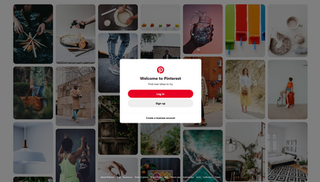
Pinterest is an American image sharing and social media service designed to enable saving and discovery of information like recipes, home, style, motivation, and inspiration on the internet using images and, on a smaller scale, animated GIFs and videos, in the form of pinboards. Created by Ben Silbermann, Paul Sciarra, and Evan Sharp, Pinterest, Inc. is headquartered in San Francisco.
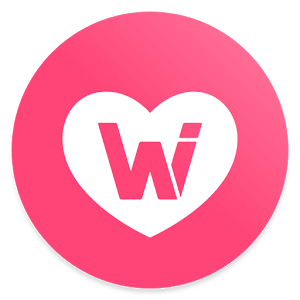
We Heart It was an image-based social network. We Heart It describes itself as "A home for your inspiration" and a place to "Organize and share the things you love." Users could collect their favorite images to share with friends and organize into collections. Users can access the site through We Heart It's iOS and Android mobile apps.

Digg Reader was a news aggregator operated by Digg. The reader was released on June 26, 2013 as a response to Google Reader shutting down. The reader was web-based and also had iOS and Android applications as well as a Google Chrome extension. The beta for the reader has received mostly positive reviews. On March 26, 2018, Digg shut down Digg Reader.

The like button on the social networking website Facebook was first enabled on February 9, 2009. The like button enables users to easily interact with status updates, comments, photos and videos, links shared by friends, and advertisements. Once clicked by a user, the designated content appears in the News Feeds of that user's friends, and the button also displays the number of other users who have liked the content, including a full or partial list of those users. The like button was extended to comments in June 2010. After extensive testing and years of questions from the public about whether it had an intention to incorporate a "Dislike" button, Facebook officially rolled out "Reactions" to users worldwide on February 24, 2016, letting users long-press on the like button for an option to use one of five pre-defined emotions, including "Love", "Haha", "Wow", "Sad", or "Angry". Reactions were also extended to comments in May 2017, and had a major graphical overhaul in April 2019.
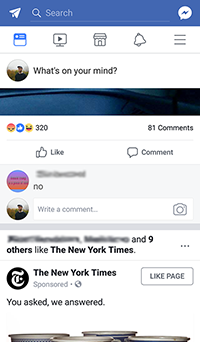
Facebook's Feed, formerly known as the News Feed, is a web feed feature for the social network. The feed is the primary system through which users are exposed to content posted on the network. Feed highlights information that includes profile changes, upcoming events, and birthdays, among other updates. Using a proprietary method, Facebook selects a handful of updates to show users every time they visit their feed, out of an average of 2,000 updates they can potentially receive. Over two billion people use Facebook every month, making the network's Feed the most viewed and most influential aspect of the news industry. The feature, introduced in 2006, was renamed "Feed" in 2022.
Facebook Stories are short user-generated photo or video collections that can be uploaded to the user's Facebook. Facebook Stories were created on March 28, 2017. They are considered a second news feed for the social media website. It is focused around Facebook's in-app camera which allows users to add fun filters and Snapchat-like lenses to their content as well as add visual geolocation tags to their photos and videos. The content is able to be posted publicly on the Facebook app for only 24 hours or can be sent as a direct message to a Facebook friend.
Algorithmic radicalization is the concept that recommender algorithms on popular social media sites such as YouTube and Facebook drive users toward progressively more extreme content over time, leading to them developing radicalized extremist political views. Algorithms record user interactions, from likes/dislikes to amount of time spent on posts, to generate endless media aimed to keep users engaged. Through echo chamber channels, the consumer is driven to be more polarized through preferences in media and self-confirmation.
